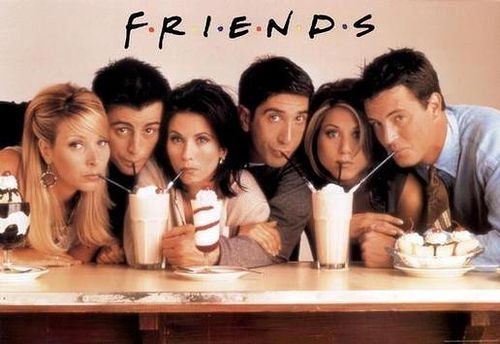Television as a Looking Glass

Since its conception in the mid-20th century, television has been evolving and changing to meet the desires of millions of viewers. It continues to adapt to the current reality of our world to better please the audience. However, this begs the question: Why do younger audiences keep watching older shows?
Recently, there has been an increased popularity among younger generations in viewing older shows, such as the definitive ‘90s sitcom Friends. As a teenager in the digital era, I understand the appeal of retrospective TV shows. There is something about the simpler lifestyle of their characters that engages teens in the 21st century.
To someone growing up in a world that revolves around technology, getting a glimpse into a time when that was not the case is an unexpected relief. The slower pace of the communication is calming, and the characters seem to have more intimacy without the distraction of electronic devices.
The jokes in the shows are easy and natural, as opposed to today’s TV comedies, in which many of the jokes feel forced. Furthermore, older series were not as political as the social commentary that dominates modern television. The political aspect takes away from the relaxing, escapist nature of TV.
For some, but not all, television is a means of shutting down one’s brain for a brief spell to avoid daily life and problems. We spend our days tirelessly working, and when it’s time to settle in for the night, we don’t want to have to utilize our brains in the same way we used them all day. This is one of the most important factors that plays into the rising ratings in earlier generation shows.
Friends is a ‘90s sitcom about six inseparable best friends. In taking the audience on a 10-year journey through the titular friends’ lives, we get to see the characters mature and navigate life’s obstacles from their mid-20s to their late 30s.
The principal strength of this show in particular is that Ross, Chandler, Joey, Monica, Phoebe, and Rachel seem like real people. A common theme that I have noticed with modern shows, like The Goldbergs, is that the characters are superficial and are not as well-developed.
Thanks to streaming services like Netflix, Amazon Prime, and Hulu, today’s teens have the opportunity to observe what shows on television were like years ago, compared to what they are now. Going back to simpler times, such shows reflect a different culture, shaped by problems and events that no longer affect us today.
If this trend continues, generations to come will be watching present day shows, and we will marvel at the way our children become attached to characters that were relevant before they were born.

Sydney Lavin ’21 is eager to continue her involvement in The Banner for her third year, but now as a co-editor of the News section. Besides writing articles,...

